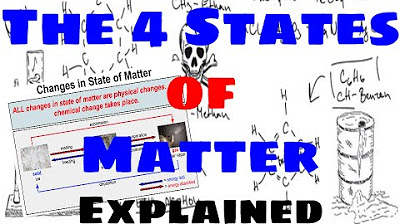Subtracting Fractions with Unlike Denominators | Math with Mr. J
Summary
TLDRIn this educational video, Mr. J teaches viewers how to subtract fractions with unlike denominators. He emphasizes the importance of finding a common denominator by identifying the least common multiple (LCM) of the denominators. The video demonstrates the process of renaming fractions to have equivalent denominators and then subtracting the numerators. Mr. J simplifies the resulting fractions, showcasing the method with examples, such as 5/6 - 3/12 and 9/10 - 2/4, leading to simplified answers of 7/12 and 2/5, respectively. He also provides additional resources for further understanding.
Takeaways
- 📘 Subtracting fractions with unlike denominators requires a common denominator, similar to addition.
- 🔍 Finding the least common multiple (LCM) of the denominators is crucial for determining the common denominator.
- 📋 Writing out multiples of each denominator is a practical method to find the LCM.
- 🔄 Renaming fractions involves adjusting both the numerator and the denominator to create an equivalent fraction with the common denominator.
- ➗ Subtracting the numerators of the renamed fractions with the common denominator gives the preliminary result.
- 🔍 After subtraction, always check if the resulting fraction can be simplified by finding the greatest common factor (GCF).
- 📝 The script provides a step-by-step guide to subtracting fractions, starting with finding a common denominator.
- 📖 Examples are used to illustrate the process, making it easier to understand the method.
- 🔗 Links to related videos for further clarification on topics like finding LCM and simplifying fractions are provided.
- 📚 The script is part of a series, with part two offering additional examples and insights.
- 👋 The presenter concludes with a friendly sign-off, encouraging viewers to seek further help if needed.
Q & A
What is the main topic covered in the Math with Mr. J. video?
-The main topic covered in the video is how to subtract fractions with unlike denominators.
Why is it necessary to have a common denominator when subtracting fractions?
-A common denominator is necessary to ensure that the fractions can be directly compared and subtracted without altering their values, as fractions with different denominators represent different parts of a whole.
What is the least common multiple and why is it used when finding a common denominator for fractions?
-The least common multiple (LCM) is the smallest number that is a multiple of both denominators. It is used to find a common denominator because it simplifies the process and reduces the complexity of the fractions involved.
How can you find the least common multiple between two numbers?
-You can find the LCM by writing out multiples of both numbers and identifying the smallest number that appears in both lists of multiples.
What is the first step when subtracting fractions with unlike denominators, according to the video?
-The first step is to find a common denominator by identifying the least common multiple between the two denominators.
What is the process of renaming a fraction in the context of subtraction with unlike denominators?
-Renaming a fraction involves adjusting both the numerator and the denominator so that the fraction is equivalent to its original value but has the common denominator identified for the subtraction.
In the example with 5/6 and 3/12, what is the least common multiple and how is it found?
-The least common multiple for 5/6 and 3/12 is 12, which is found by listing multiples of 6 and noticing that 12 is a multiple of both 6 and 12.
How is the fraction 5/6 renamed to have a common denominator of 12?
-The fraction 5/6 is renamed by multiplying both the numerator and the denominator by 2, resulting in the equivalent fraction 10/12.
What is the final simplified answer for the subtraction problem 5/6 - 3/12, and why is it in simplest form?
-The final simplified answer is 7/12. It is in simplest form because 7 and 12 have no common factors other than 1.
In the second example with 9/10 and 2/4, what is the least common multiple and how is it determined?
-The least common multiple for 9/10 and 2/4 is 20, determined by extending the list of multiples for both 10 and 4 until a common multiple is found.
How is the fraction 2/4 renamed to have a common denominator of 20?
-The fraction 2/4 is renamed by multiplying both the numerator and the denominator by 5, resulting in the equivalent fraction 10/20.
What is the final simplified answer for the subtraction problem 9/10 - 2/4, and how is it simplified?
-The final simplified answer is 2/5. It is simplified by dividing both the numerator and the denominator of 8/20 by their greatest common factor, which is 4.
Outlines

هذا القسم متوفر فقط للمشتركين. يرجى الترقية للوصول إلى هذه الميزة.
قم بالترقية الآنMindmap

هذا القسم متوفر فقط للمشتركين. يرجى الترقية للوصول إلى هذه الميزة.
قم بالترقية الآنKeywords

هذا القسم متوفر فقط للمشتركين. يرجى الترقية للوصول إلى هذه الميزة.
قم بالترقية الآنHighlights

هذا القسم متوفر فقط للمشتركين. يرجى الترقية للوصول إلى هذه الميزة.
قم بالترقية الآنTranscripts

هذا القسم متوفر فقط للمشتركين. يرجى الترقية للوصول إلى هذه الميزة.
قم بالترقية الآنتصفح المزيد من مقاطع الفيديو ذات الصلة

The Four States of Matter - Explained

Lab Equipment - Explained

3. Gr 11 Life Sciences - Population Ecology - Theory 3 Mark Recapture Method

4. Gr 11 Life Sciences - Population Ecology - Worksheet 1

PENJASKES KELAS X - SOFTBALL

Introduction to Culture [AP Human Geography Review Unit 3 Topic 1]

Menentukan Mr ( massa molekul relatif )
5.0 / 5 (0 votes)
